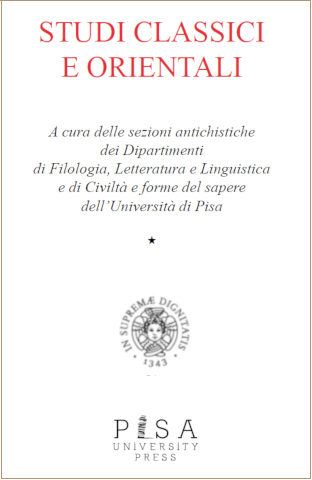Una dedica a Basileia da Iasos e il duplice culto della Madre degli Dei e della Madre Frigia
Abstract
A dedication to Basileia from Iasos and the dual cult of the Mother ofthe Gods and of the Mother Phrygia.The publication of a dedication to Basileia offers the opportunity to explorein a well documented context the significance of the concept of ‘Queen’ inthe cults of the Mother. The dedication has been found in Iasos during theexcavation in the West Stoa, together with epigraphic and archaeologicalevidence relating to the cult of the Mother of Gods. An inscription from the sanctuary of the Çanacık Tepe, near Iasos, makes it possible to identifyBasileia with the Mother of Gods. Among the documents found in theWest Stoa excavation is the diagraphe for the sale of the priesthood of theMother of the Gods published by G. Maddoli in this volume. An importantfeature of this text is that it clearly distinguishes the cult of the Mother ofthe Gods from the cult of the Phrygian Mother, while implying that the twocults were practised in the same sanctuary. The cult of the Mother Phrygiawas already known in Iasos thanks to a Hellenistic stele, containing a listof people – all with Anatolian names – who contributed to the constructionof an unknown building (I.Iasos 229). The Mother features as ‘Queen’ alsoin figurative art, notably on the double naiskoi votive reliefs, found mostlyin Athens, but also near to Iasos, in Miletus. Locally, the official epithetBasileia would be transparent and unambiguous and would refer to themost venerand cult (in Iasos the cult of the Mother of the Gods). The royaliconography, on the other hand, was useful in the flexible strategies of distinctionrequired by a double cult: among the two goddesses worshipped inthe same sanctuary, the individual offerers were free to identify as Queenthe Mother to which they were most closely related.
massimo.nafissi@unipg.it
Fascicolo
Sezione
Articoli


